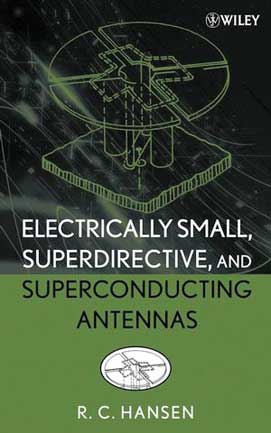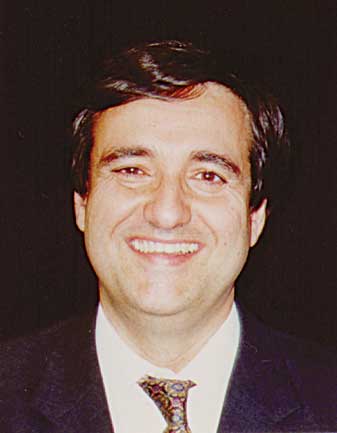 Electrically
Small, Superdirective and Superconductive Antennas
Electrically
Small, Superdirective and Superconductive Antennas
by R.C. Hansen
Publisher: Wiley Interscience, 2006
I can’t remember when was the last time, if ever, that a
book on antennas was reviewed for the EMC Newsletter. In EMC,
there is not much we can do about intentional radiators. We tend
to leave the subject of antennas for the antenna engineers, and
we always try to get away from or suppress unintentional antennas.
So, who cares about studying them?
My motivation for reviewing this book was based upon the fact
that it deals specifically with “small” antennas,
the kind of un-intentional antennas that most often we find in
EMC (small monopoles, dipoles and loops). For example, a cable
radiating common mode current is a small monopole (length of cable
is usually << its radiating wavelength), and the radiation
from a PCB can be modeled as a small loop antenna. This book addresses
only intentional radiators but most of the principals, I think,
are applicable also to un-intentional radiators.
I have to confess that I had to refresh my memory over the stuff
I learned twenty years ago about antennas. I took a one-year course
on antennas about twenty years ago when I was a graduate student;
that was basically my only background when I read this book. However,
the book is written in a very readable fashion without complex
derivations and to the point. If I had no problems understanding
the material, you should not either. The book is short, only about
160 pages, and as I previously stated, it is very much to the
point, providing the most important parameters of the basic types
of small antennas (loops, dipole, monopole and their derivatives)
without complex math derivations, but instead they are often intuitively
explained. The most impressive aspect of the book is its large
number of references quoted throughout the text; for example,
chapter 1 has 198 references—all quoted in the text. These
references probably cover the complete history of small antenna
research since the late 1940’s to the present. Another characteristic
of this book is that the author provides a “historical flow”
of small antennas development throughout the years, including
many examples of “small antenna blunders” that have
been built, also throughout the years.
The book is only three chapters. Chapter 1 is the largest chapter
in the book. It begins with the fundamental limitations of bandwidth
and matching, and then provides detailed discussions on the design
of loaded dipoles, ferrite loops, patches and unusual substrates
and dielectric resonator antennas. An interesting section on fractal
antennas is also provided. I actually thought fractal antennas
had an improved performance, but it turns out the better antennas
are the simplest antennas. As previous stated, the author discusses
several examples of antennas that are based on good physics but
are poor performers (I think fractals fall into this category)
as well as design examples of antennas that are based on both
poor physics and poor performance.
Chapter 2, which is the second largest chapter in the book, discusses
superdirective antennas. Small dipoles and loops are superdirective;
their directivity remain 1.5 as size decreases, but their efficiency
also decreases. Excessive array superdirectivity (most arrays
are made up of small dipoles or loops) inflict major problems
in the efficiency of antennas (low radiation resistance) and narrow
bandwidth. Superdirective antennas have limitations in their capabilities
of bandwidth, efficiency and tolerances. The author also explores
the magnification of intrinsic matching loss due to large mismatches
and evaluates the recent and promising non-Foster matching circuits.
Superconducting antennas are discussed in Chapter 3. The author
reviews superconductive concepts and new principles for dipole,
loop and patch antennas. The author concludes with a discussion
of superconductivity delay for wideband phase array steering.
If you need to get a good background in small antennas, this is
a very good and useful book. If you need to research the topic
further, the references in this book will keep you busy for months.
EMC
 Book
Review
Book
Review